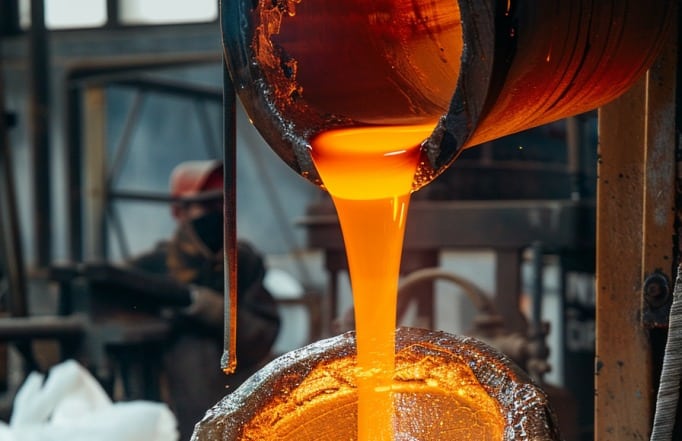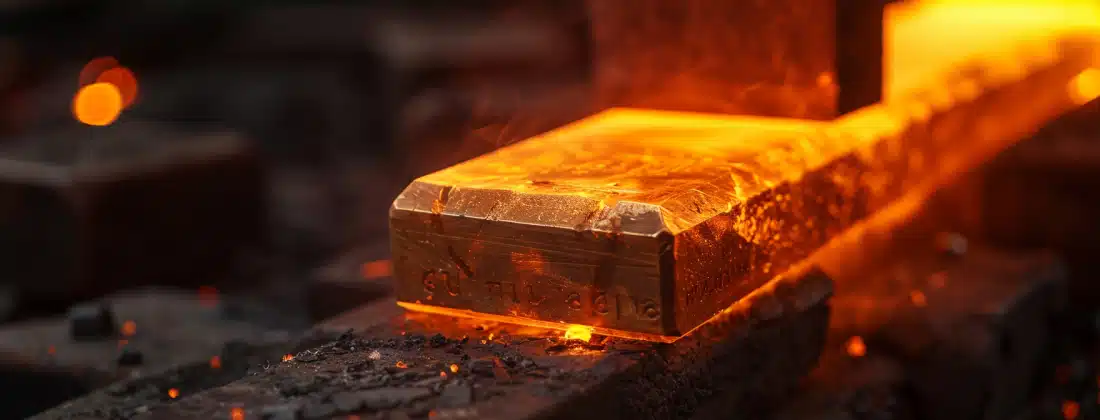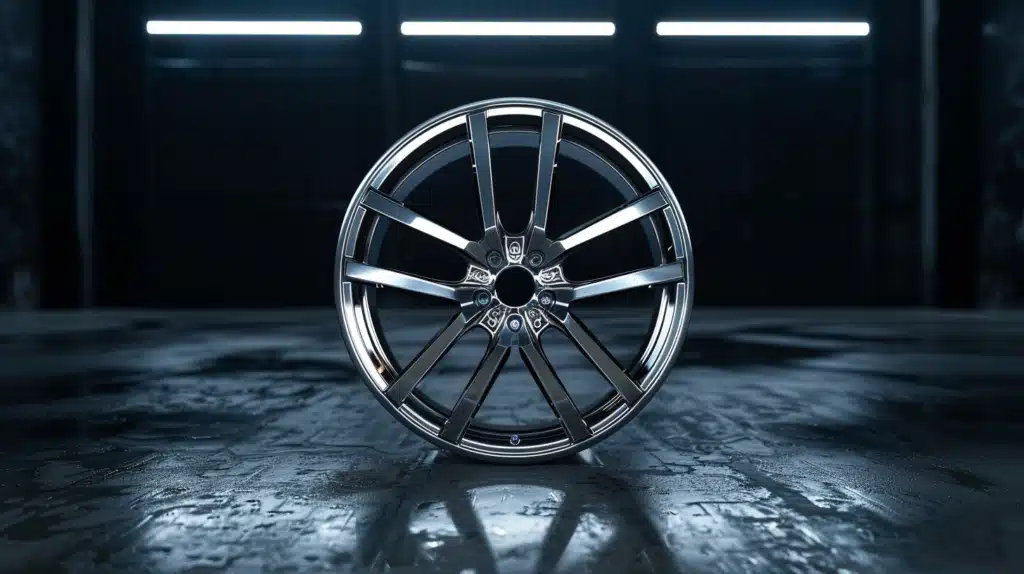Are you tired of your car’s dull, lackluster wheels? You’re not alone.
Many vehicle owners struggle to find the perfect rims that complement their car’s style and enhance its performance. The good news?
Alloy rims offer many options to give your ride a fresh, eye-catching look while improving handling and fuel efficiency.
This comprehensive guide will explore the alloy rims, from classic designs to the latest trends.
You’ll discover how each type can elevate your driving experience and make your car stand out.
Get ready to dive into the world of alloy rims and find the perfect set for your vehicle!
What Are Alloy Rims?
An alloy is a mixture of metals designed to enhance certain qualities rather than a pure metal.
An alloy rim is a wheel made from a mixture of metals, typically aluminum or magnesium, combined to enhance specific properties such as strength, lightness, and corrosion resistance.
Aluminum and magnesium are the most common metals used in alloy rim production.
Aluminum is chosen for its lightweight properties, which improve fuel efficiency and handling, while magnesium offers even greater weight reduction and strength.
Both metals also provide excellent corrosion resistance, ensuring the longevity of the rims.
Historical Background of Alloy Rims
Rim materials have gradually evolved from traditional steel rims to modern alloy versions.
In the past, steel was the primary material used for wheel production due to its strength and durability.
However, advancements in metallurgy and manufacturing processes have allowed for the development of alloy rims that offer superior performance without compromising strength.
The introduction of cast aluminum alloy wheels in the 1960s marked a significant milestone in this transition, paving the way for the widespread adoption of alloy rims in the automotive industry.
Types of Alloy Rims
Alloy rims are made from various materials and use different processes, each uniquely impacting vehicle performance and style.
The choice of material and production method depends on desired weight reduction, strength, corrosion resistance, aesthetic appeal, and cost.
Understanding the characteristics of each type of alloy rim can help vehicle owners make informed decisions when selecting the most suitable option for their specific needs and preferences.
1. Aluminum Alloys
Aluminum is one of the most popular materials used in alloy rim manufacturing due to its attractive weight, cost, and performance balance.
Its widespread use in the automotive industry has made it a go-to choice for many vehicle owners.
Characteristics of Aluminum Alloys
- Lightweight nature: Aluminum alloy rims significantly reduce the vehicle’s overall weight, improving fuel efficiency and better handling.
- Corrosion resistance: Aluminum alloys offer excellent corrosion resistance, ensuring the rims maintain their structural integrity and aesthetic appeal over time.
- Aesthetic appeal: Aluminum alloy rims are available in various finishes and styles, allowing for greater customization to suit individual tastes.
- Common Uses: Aluminum alloy rims are ideal for mainstream vehicles used for daily commutes and performance cars that demand better handling and responsiveness.
2. Magnesium Alloys
Magnesium alloys are a premium option for those who prioritize performance above all else despite the higher cost associated with this material.
Benefits of Magnesium Alloys
- Extremely light: Magnesium is even lighter than aluminum, resulting in unparalleled weight reduction, enhancing acceleration and braking performance.
- Strong: Magnesium alloys maintain high strength levels, providing excellent durability under demanding driving conditions.
Drawbacks of Magnesium Alloys
- Higher cost: The premium nature of magnesium alloys makes them less accessible to the average consumer.
- Corrosion susceptibility: Magnesium alloys are more prone to corrosion than aluminum, necessitating regular maintenance to preserve their integrity.
3. Forged Alloys
- Created by applying high pressure to a solid block of alloy material, resulting in a stronger and lighter rim. However, this process is more expensive.
- Forged alloys are preferred for high-performance vehicles and luxury cars that demand the best strength, lightness, and overall performance.
4. Cast Alloys
- Manufactured by pouring molten alloy into a mold, offering greater design flexibility and cost-effectiveness. However, they are generally heavier and less durable than forged alloys.
- Cast alloys are suitable for average consumer vehicles as they balance cost and performance.
5. Multi-piece Rims
- Offer high levels of customization, allowing for unique combinations of style elements and performance enhancements.
- It is commonly found in high-end sports cars and luxury vehicles where personalization and top-tier performance are highly valued.
6. Diamond-cut Rims
- Feature a precision-machined finish that removes a thin layer of the alloy to expose the bright metal beneath, creating a visually striking appearance.
- Often chosen for show cars and luxury vehicles where maximum visual impact is desired.
Manufacturing Processes of Alloy Rims
Understanding the manufacturing processes of alloy rims is essential for appreciating their quality, durability, and performance characteristics.
The two main manufacturing methods for alloy rims are casting and forging, each with advantages and trade-offs.
By exploring these processes, we can better understand how they influence the final product and make informed decisions when selecting the most suitable alloy rims for our vehicles.
Casting Technique: Low-Pressure Die Casting

A process where molten metal is forced into a mold under relatively low pressure, allowing for a more controlled and uniform mold filling.
The molten alloy is held in a furnace below the casting mold.
A pressurized gas pushes the molten metal into the mold cavity, solidifying it to form the rim.
This method is commonly used for larger, more complex rim designs.
Casting Technique: High-Pressure die Casting
High-pressure die casting involves molten metal injected into a mold at high pressure, resulting in faster production rates and more intricate designs.
It involves injecting molten alloy into a mold at high pressure, typically using a hydraulic or mechanical piston.
The high pressure ensures that the molten metal fills the mold cavity quickly and evenly, allowing for faster production rates and more intricate designs.
Benefits of Casting Technique
- Low-pressure die casting results in better material density and fewer porosity issues than high-pressure casting. The improved material properties lead to stronger and more durable rims, making them suitable for high-performance applications.
- High-pressure die casting: This method’s main advantages are its faster production rate and cost-effectiveness for large-volume production. The high pressure allows for more intricate designs and thinner wall sections, reducing overall weight.
Forging Technique

Forging alloy rims involves heating a solid billet of alloy material to a high temperature and then shaping it using high-pressure presses or hammers.
The metal is typically heated to a point where it becomes malleable but not molten.
The forging process can be performed in multiple stages, with each stage refining the shape and size of the rim.
Benefits of Forging Technique
- The metal’s microstructure is aligned during the forging process, improving the strength-to-weight ratio. This enhanced strength allows for thinner wall sections, reducing overall weight without compromising durability.
- The forging process minimizes porosity and creates a more homogeneous metal structure, making the rims more resistant to impact, fatigue, and wear.
Comparison: Casting vs. Forging Techniques
| Aspect | Forging | Casting |
|---|---|---|
| Performance Outcomes | – Superior performance | – Generally adequate performance |
| – Reduced weight improves vehicle handling, acceleration, and fuel efficiency | – Heavier, affecting performance negatively | |
| – Increased strength withstands high-performance stresses | – Less strength than forged rims | |
| Cost | – More labor-intensive and costly | – Less expensive, suitable for large-scale production |
| – Requires specialized equipment and skilled labor | – Uses simpler equipment | |
| Production Time | – Longer production times | – Faster production rates |
Factors to Consider When Selecting Alloy Rims
Choosing the right alloy rims is crucial for your vehicle’s aesthetic appeal and functionality.
The perfect rims can enhance your car’s appearance while improving its performance and safety.
Several key factors must be considered when selecting alloy rims, ensuring you make an informed decision that meets your needs and preferences.
- Size and Fitment: The correct rim size is essential for safety and compatibility. Rims that are too large or too small can adversely affect your vehicle’s handling, stability, and overall performance.
- Compatibility with Vehicle Models: Not all alloy rims are compatible with every vehicle model. Ensuring that your rims are designed to fit your specific make and model is essential.
- Impact on Vehicle Handling and Performance: The size and material of your alloy rims can significantly impact your vehicle’s handling and performance characteristics.
- Material and Construction: Alloy rims are typically made from aluminum or magnesium, each offering unique benefits in terms of weight, strength, and performance.
- Style and Design: The style and design of your alloy rims can significantly influence your vehicle’s appearance and identity.
Maintenance and Care for Alloy Rims
Proper maintenance and care of alloy rims are essential for preserving their appearance, extending their lifespan, and ensuring optimal vehicle performance.
Neglecting to maintain your alloy rims can lead to corrosion, damage, and even compromised safety.
Following a regular maintenance routine and promptly addressing any issues, you can keep your alloy rims looking great and functioning at their best.
1. Routine Cleaning and Techniques for Washing
To prevent the buildup of dirt, grime, and brake dust, which can lead to corrosion, it’s recommended to clean your alloy rims at least once every two weeks.
When cleaning your alloy rims, using cleaners specifically designed for this purpose is crucial.
Avoid harsh chemicals, such as bleach or acid-based cleaners, which can damage the finish and accelerate corrosion.
Instead, opt for pH-neutral, non-abrasive cleaners that are safe for use on alloy surfaces.
- Begin by rinsing your alloy rims with a high-pressure hose to remove loose dirt and debris.
- Apply the recommended cleaning agent to the rims, following the manufacturer’s instructions.
- Using a soft-bristled brush, gently scrub the rims in a circular motion, paying attention to hard-to-reach areas where dirt tends to accumulate.
- Rinse the rims thoroughly with clean water to remove all cleaning residue.
- Dry the rims with a soft, lint-free cloth to prevent water spots and streaks.
2. Tire Selection and Maintenance
Choosing the right tires for your vehicle and maintaining proper tire pressure can help protect your alloy rims from damage.
Tires that are too wide or have a low profile can increase the risk of rim damage when encountering road hazards.
Check your tire pressure regularly to ensure it meets the manufacturer’s recommendations. Underinflated tires can cause excessive wear on the rims.
3. Use of Protective Coatings
Applying a protective coating or sealant to your alloy rims can help shield them from environmental elements and reduce the likelihood of scratches and oxidation.
These coatings create a barrier between the alloy surface and contaminants, making it easier to clean the rims and maintain their appearance.
Consider having a professional apply a high-quality ceramic coating or wax sealant for optimal protection.
4. DIY Repair Tips
For minor damage, such as small scratches or scuffs, you may be able to perform repairs at home using a rim repair kit.
These kits typically include sandpaper, filler compound, and touch-up paint.
Follow the manufacturer’s instructions carefully, and clean the affected area thoroughly before beginning the repair process.
Advantages of Alloy Rims
- Light Weight: Alloy rims are lighter in weight than traditional steel rims. This weight reduction improves overall vehicle performance, as the engine has less mass to propel, resulting in enhanced efficiency and responsiveness.
- Fuel Efficiency: The reduced weight of alloy rims enhances fuel efficiency by lowering the vehicle’s overall mass. This requires less energy for acceleration and maintaining speed, thus improving engine efficiency.
- Acceleration and Braking: Lighter alloy rims allow quicker and more responsive braking. The wheels’ reduced rotational mass means the engine can more effectively transfer power to the ground, resulting in faster acceleration.
- Heat Dissipation: Alloy rims dissipate heat, enhancing brake performance and reliability during high-speed or frequent braking. This is crucial for high-performance and demanding driving conditions.
Conclusion
Alloy rims offer a perfect blend of performance and style for your vehicle.
From their lightweight construction that enhances fuel efficiency, acceleration, and braking to their diverse designs and finishes, alloy rims provide a compelling choice for those seeking to upgrade their wheels.
By carefully considering factors such as size, compatibility, and load capacity, you can select the ideal set of alloy rims that will elevate your car’s appearance and optimize its performance.
With proper maintenance and care, your alloy rims will continue to deliver these benefits for years.
So, whether you prioritize function, form, or a combination of both, investing in a quality set of alloy rims is a decision you won’t regret.
Take the next step and explore the exciting world of alloy rims today!


